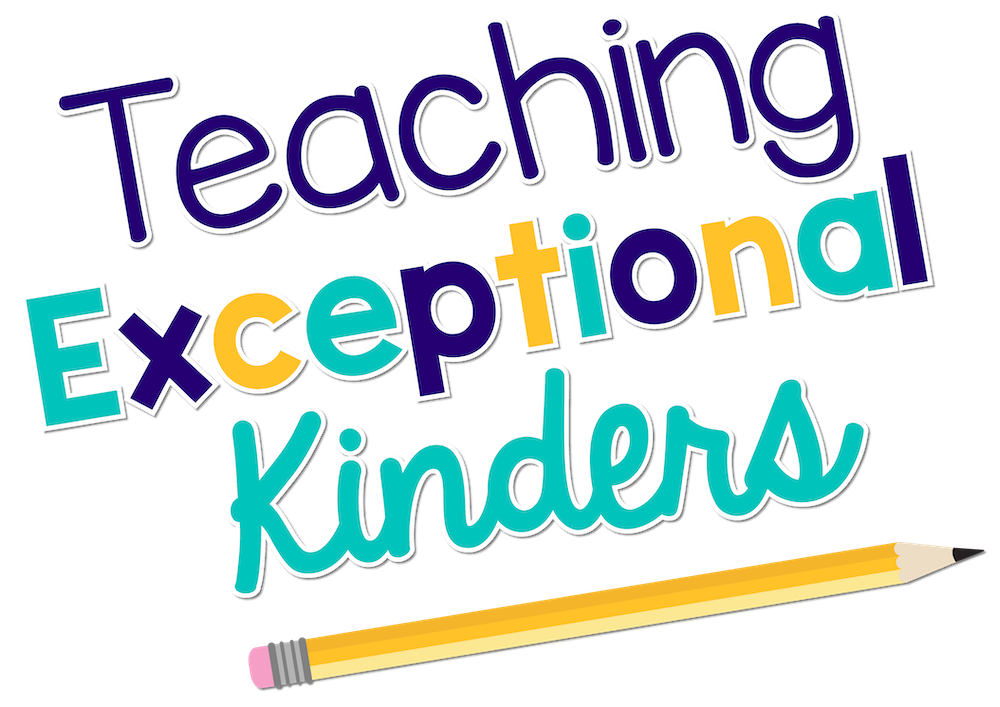Taking Away Recess: What To Do Instead
Recess is one part of the school day that students look forward to the most. This is why teachers often take away recess due to misbehavior in the classroom. It’s a consequence that students don’t want, which should make it effective…right? Not necessarily. In fact, taking away recess is rarely an effective consequence, especially for young kindergarten students. Let’s talk about what to do instead.
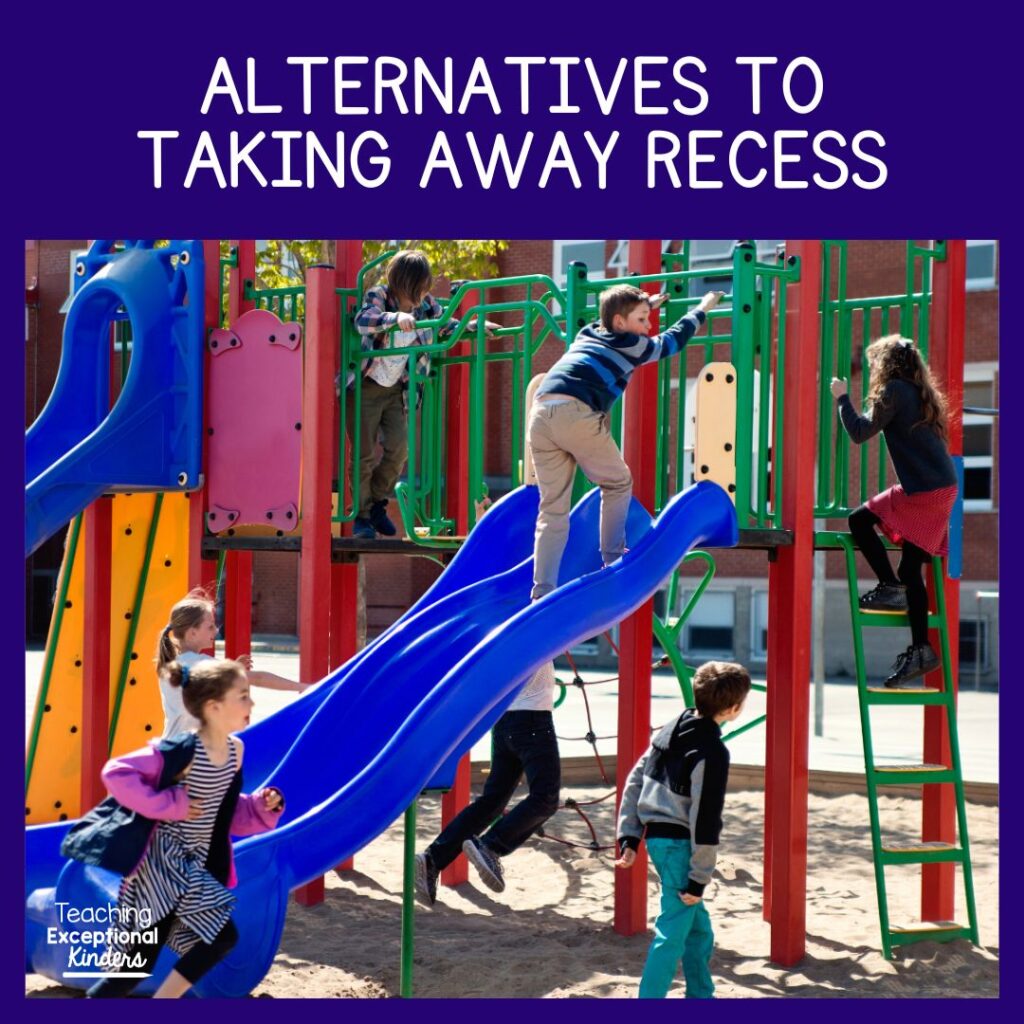
Why Students Need Recess
There are countless reasons why our kindergarteners need to go to recess. Here are four of the most important ones:
- Take a Break: It’s not realistic to expect five and six year olds to sit in a structured setting without a break. A small brain break, while helpful, does not take the place of physically leaving the classroom. Students need a chance to expend all of the energy that has been building up during the daily learning routine.
- Unstructured Socialization: Students must learn how to interact with their peers outside of the structured classroom setting. It’s absolutely essential for them to practice socializing with their peers, independent of teacher intervention. Recess is a wonderful opportunity for students to practice their self-regulation and problem-solving skills.
- Exercise: For many students, recess is one of the only opportunities for significant physical exercise that they receive during the entire day. Not all students have the chance to participate in extracurricular sports!
- Improve Classroom Management: Recess can have a trickle-down effect on classroom management. For example, when students can improve their gross motor skills on the playground, they will have more control over their bodies when lining up and when sitting at carpet time. This will help your entire day go more smoothly!
What to Do Instead of Taking Away Recess
If we don’t take away recess, what other options are there? With so many things going on during the school day, it can feel like taking away recess is truly one of the only consequences that can fit into the routine. If you can relate to that, check out four of my favorite alternatives to taking away recess.
Create Less-Structured Time in Your Classroom
The first alternative is to create your own less structured classroom time during the daily routine. During this flexible time, be sure that it includes something that your students will look forward to. Whether this is five minutes of free time before lunch or a dance party after centers, you can create another desirable part of the school day that you can take away as needed. No need to take away recess!
For example, this option could work for a student who refuses to do their work during math time. While the rest of the class has free play with their fast finisher tubs at the end of the math block, the student would need to sit at the table with you to finish their work.
Have a Calming Area in Your Classroom
Another alternative to taking away recess is to provide a safe space for students to take a break within your classroom. A calming space typically contains self-regulation tools and prompts in a safe, quiet area for students to process their emotions with less sensory input. I have written blog posts about how to set up a calming space that actually works!
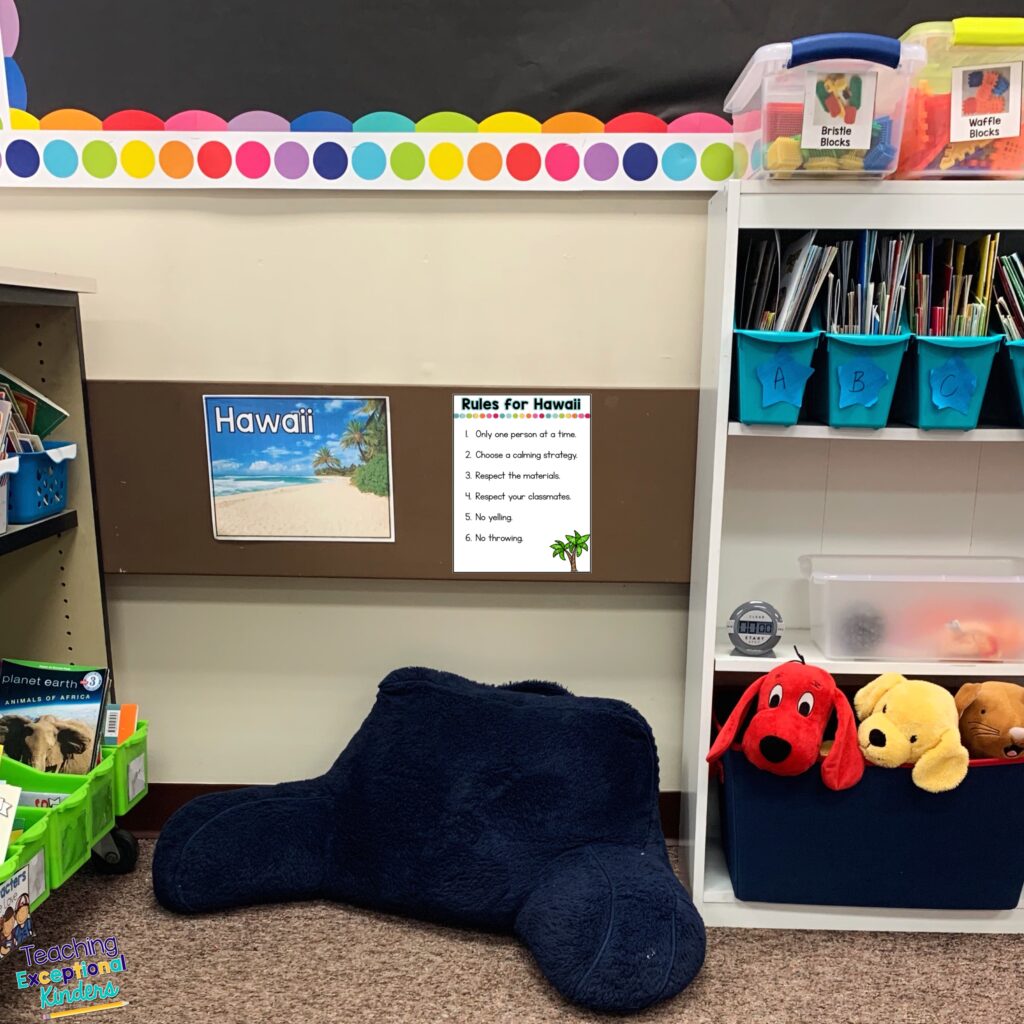
Ultimately, a calming space allows students to take a break and start fresh, returning to the classroom activity as soon as they’re ready. Once you’ve taught your students how to use the calming area effectively, you’ll likely find that your students will improve their self-regulation skills. They may even be able to utilize the calming space independently, without you needing to direct them to take a break. This will have a much less negative impact on their social development than regularly staying in from recess.
Immediate, Natural Consequences
Another problem with taking away recess is that it is often a delayed consequence for unrelated behavior. A student shouldn’t have to miss lunch recess because they made a huge mess with the morning tubs. Instead, you can utilize natural consequences that follow the negative behavior more immediately. This is a much more effective way to address student behavior.
For example, you might have a student who refuses to participate in centers unless it’s an iPad or computer station. After giving them a warning, you could have them sit at their desk with their head down when it’s time for their preferred center activity. This would be a more immediate and natural consequence than keeping them in from recess two hours later.
Communicate with Parents
Finally, parent communication is one of the most important things that you can do for behavior management. As I’ve mentioned in a previous blog post, relationships are at the heart of classroom management. This includes relationships with the parents and guardians of your students.
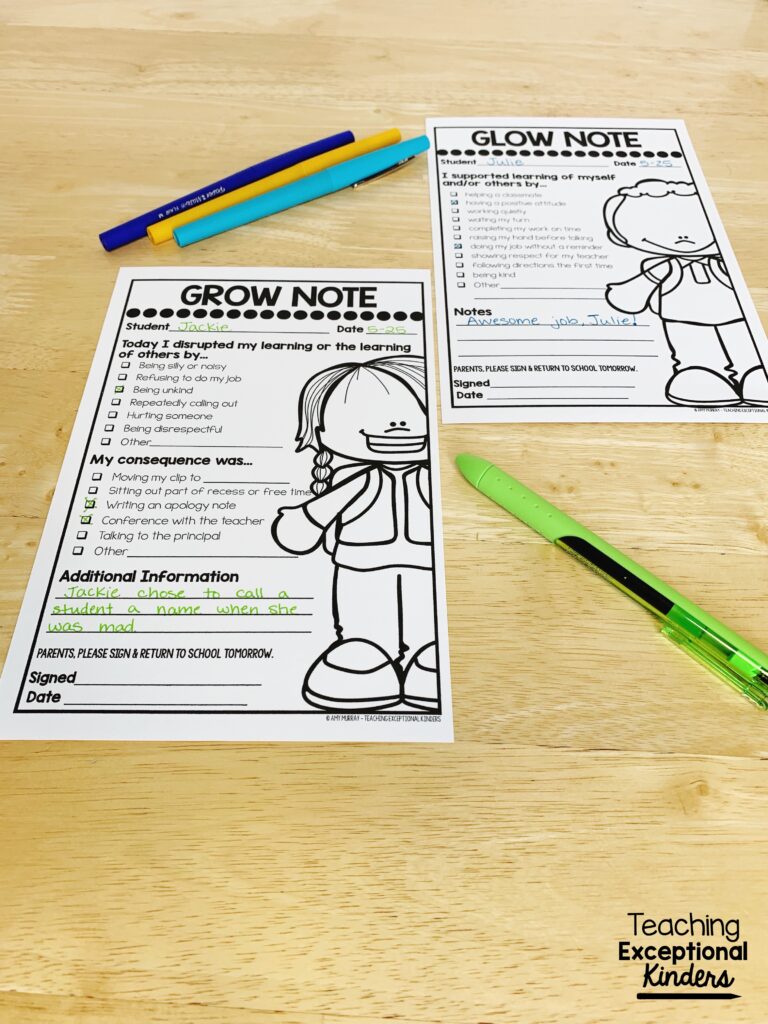
If you have a student who is exhibiting behavior that would normally keep them in from recess, consider sending home a grow note instead. This parent communication tool is a simple checklist with room for notes to inform parents of what their child is doing in the classroom. For many students, receiving a grow note is a much more effective consequence than staying in from recess. It allows you to have worthwhile dialogue with the student and their parents regarding the behavior.
Fill out the form below to receive free Glow and Grow notes you can use in your classroom.
What to Do If Recess Is the Problem
While it’s important that students go to recess, you will likely have students whose problematic behavior occurs on the playground. In this case, it wouldn’t make sense to continue to send them outside for recess without addressing the behavior. Check out the video below where I give you some ideas for what to do in this situation!
Save These Alternatives to Taking Away Recess
Be sure to save this post if you’d like to come back to it later. Just add the pin below to your favorite teaching board on Pinterest. You’ll be able to quickly find these ideas when your student needs a consequence, but you’re hesitant to take away recess.
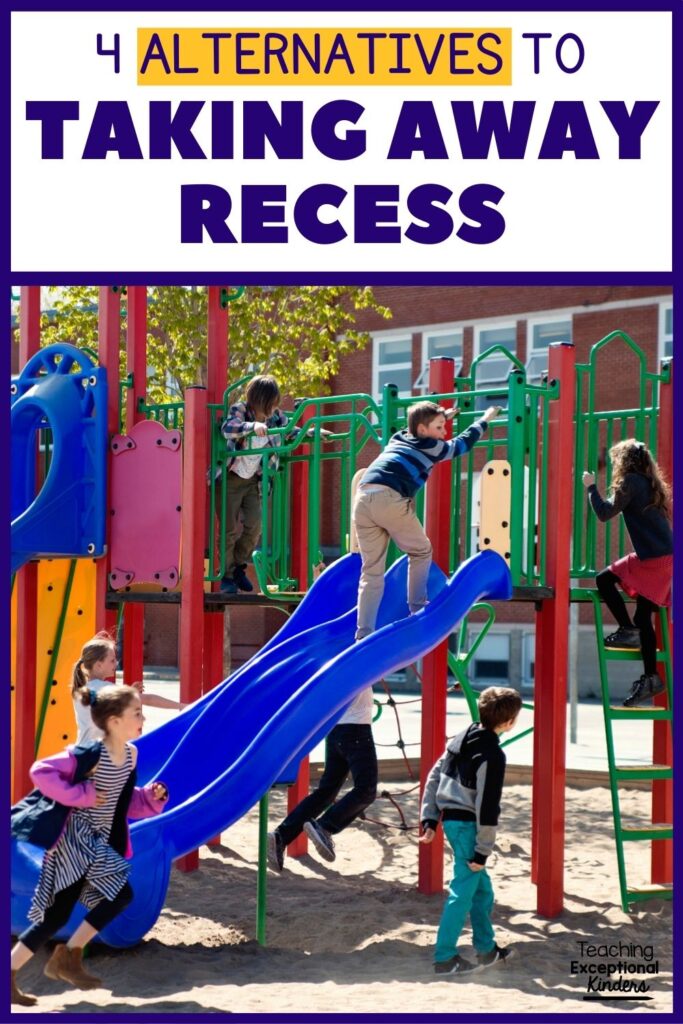
Amy
SITE DESIGN BY LAINE SUTHERLAND DESIGNS

